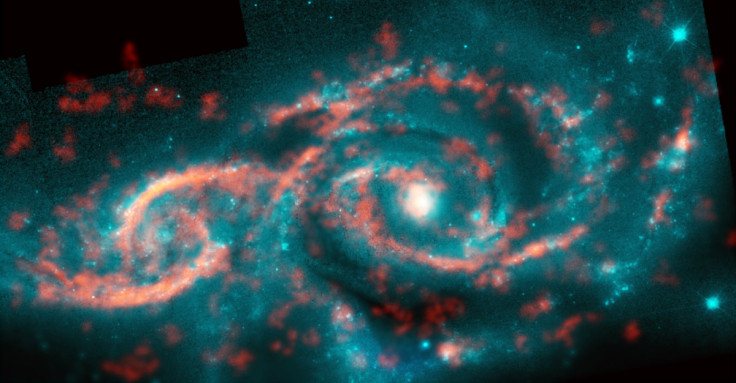Stunning eyelid in the skies created by 'tsunami' of stars colliding
After the IC 2163 and NGC 2207 galaxies collided, gases and stars formed a stunning eyelid feature.
A 'tsunami' of stars and gases crashing into spiral galaxy IC 2163, about 130 million light years from Earth, resembles a pair of eyelids - as seen in stunning new pictures captured by scientists. The phenomenon occurred following the collision of this IC 2163 galaxy with another one known as NGC 2207.
Collisions between galaxies are not rare - even the Milky Way and the Andromeda galaxy, bound by gravity, are approaching each other at great speed. A potential collision is expected in a billion years. These galaxy interactions stimulate the formation of many, massive stars and many of them become supernovae.
In the case of the IC 2163 and NGC 2207 galaxies, three supernova explosions have already been reported in the past 15 years, as the interactions between the two galaxies have been extensively studied. In a paper published in the Astrophysical Journal, scientists have now described the formation of the dazzling 'eyelid-shaped' arcs of intense star formation resulting from these interactions. The discovery of such a feature is uncommon and can shed a light on the process of galactic collision.
"Galactic eyelids last only a few tens of millions of years, which is incredibly brief in the lifespan of a galaxy. Finding one in such a newly formed state gives us an exceptional opportunity to study what happens when one galaxy grazes another," lead author Michele Kaufman said.
Measuring gases in the 'eyelid'
To observe the phenomenon, the astronomers have used the Atacama Large Millimetre/submillimetre Array (ALMA), an international astronomy facility which is the result of a collaboration between ESO, the U.S. National Science Foundation (NSF) and the National Institutes of Natural Sciences (NINS) of Japan.

The scientists have measured the motion of carbon monoxide gas in the galaxy's narrow eyelid features to understand how this feature might have formed. They have discovered it is racing inward the 'eyelid' at speeds greater than 100 kilometres a second. However, this speed quickly decelerates and the gas' motion becomes more chaotic - this characteristic has prompted the scientists to come up with the tsunami imagery.
"What we observe in this galaxy is very much like a massive ocean wave barrelling toward shore until it interacts with the shallows, causing it to lose momentum and dump all of its water and sand on the beach," said co-author Bruce Elmegreen, from IBM's T.J. Watson Research Center, New York.
This 'tsunami' produced by the encounter between the two galaxies leads to gas piling up, and this is what produces new star clusters as well as the eyelid features.
© Copyright IBTimes 2025. All rights reserved.






















